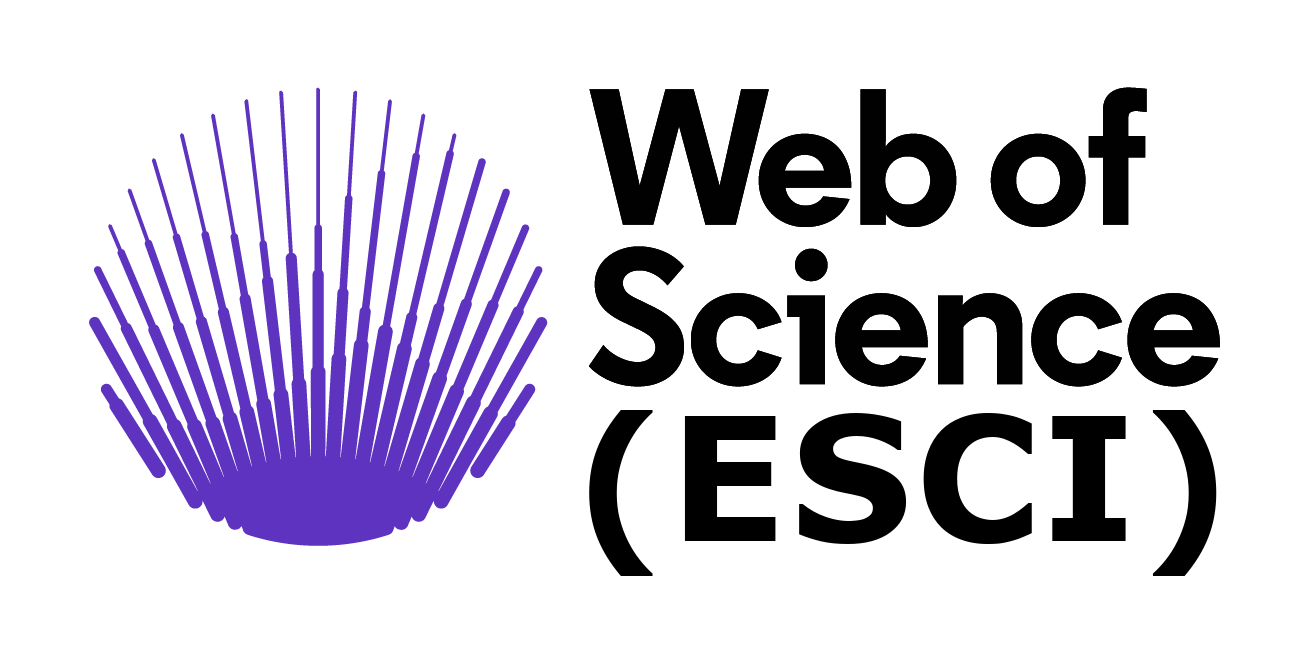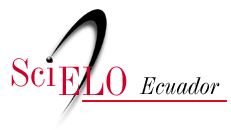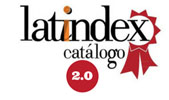Etapas óptimas de sistemas de captación y almacenamiento de energía de RF
DOI:
https://doi.org/10.29019/enfoqueute.883Palabras clave:
Recolección de energía, Radiofrecuencia, Multiplicadores de voltaje, Rectena, EtapasResumen
Este documento revisa los modelos de sistemas de captación de energía de Radiofrecuencia (RF) a partir de la información recogida en varios artículos publicados en repositorios científicos de todo el mundo. Tiene como objetivo registrar información relevante de cada uno de ellos, como: topología del sistema, circuitos y características de cada etapa, componentes electrónicos utilizados, dimensiones, entre otros, para tabular y cotejar estos datos, con el fin de determinar cuál es el que presenta mejores características por etapa y así considerarlo para realizar una investigación profunda y mejorar su diseño para captar energía. En este estudio se utilizó una metodología dividida en cuatro fases: investigación, lectura científica, extracción de información relevante y tabulación. Una vez realizado el estudio de los sistemas seleccionados, se compararon los resultados obtenidos en cada uno y se seleccionó la topología, circuitos o elementos que obtuvieron mejores resultados para las etapas: Antena, Acoplamiento, Rectificación, Administración de energía y Almacenamiento de energía. Finalmente, se creó una aplicación para dispositivos Android en la que se encuentra toda la información recolectada y los resultados obtenidos de manera que funcione como una fuente de consulta para futuras investigaciones.
Descargas
Referencias
Adnan, S., Hoq, T., Karim, Z., Alam, K., Howlader, M. y Rajkumar, R. (2019). Energy Harvesting-Technical Analysis of Evolution, Control Strategies, and Future Aspects, Journal of Electronic Science and Technology, 116-125. https://doi.org/10.11989/JEST.1674-862X.80314201
Ali, M., Albasha, L. y Qaddoumi, N. (2013). RF energy harvesting for autonomous wireless sensor networks, 8th International Conference on Design & Technology of Integrated Systems in Nanoscale Era (DTIS), 78-81. http://dx.doi.org/10.1109/DTIS.2013.6527782
Arrawatia, M., Baghini, M.S. y Kumar, G. (2016). Broadband Bent Triangular Omnidirectional Antenna for RF Energy Harvesting, IEEE Antennas and Wireless Propagation Letters, 15, 36-39. http://dx.doi.org/10.1109/LAWP.2015.2427232
Awais, M., Rehman, S., Asif, M., Usman, M. R. y Shin, S.Y. (2019). RF Energy Harvesting for Low Power Applications Using Rectenna Operating at 2.45 GHz. International Conference on Information and Communication Technology Convergence (ICTC), 789-793. http://dx.doi.org/10.1109/ICTC46691.2019.8940014
Balarezo, D., Gordón, C., Cuji J. y Salazar, F. (2022). Conditioning System for an Electromagnetic Energy Collection Device. En Advances and Applications in Computer Science, Electronics, and Industrial Engineering. CSEI 2021.. Springer, Cham. https://doi.org/10.1007/978-3-030-97719-1_13
Berrueta, A., Ursúa, A., Martín, I. S., Eftekhari, A. y Sanchis, P. (2019). Supercapacitors: Electrical Characteristics, Modeling, Applications, and Future Trends. IEEE Access, 50869-50896. https://10.1109/ACCESS.2019.2908558
Cama, Pinto, A., De la Hoz Franco, E. y Cama Pinto, D. (2012). Las redes de sensores inalámbricos y el internet de las cosas. INGE CUC, 8(1), 163-172.
Cansiz, M., Altinel, D. y Kurt, G.K. (2019). “Efficiency in RF energy harvesting systems: A comprehensive review”. Elsevier, 292-309. https://doi.org/10.1016/j.energy.2019.02.100
Chouhan, S., Nurmi, M., Halonen, K. (2016). Efficiency enhanced voltage multiplier circuit for RF energy harvesting. Microelectronics Journal, 95-102. https://doi.org/10.1016/j.mejo.2015.11.012
Dolgov, A., Zane, R. y Popovic, Z. (2010). Power Management System for Online Low Power RF Energy Harvesting Optimization. IEEE Transactions on Circuits and Systems I: Regular Papers, 57(7), 1802-1811. http://dx.doi.org/10.1109/TCSI.2009.2034891
Eid, A., Costantino, J., Tak, Y., Ramadán, A., Abdalá, M., ElHajj, R., Awad, R. y Kasba del IB. (2017). An efficient RF energy harvesting system", European Conference on Antennas and Propagation (EUCAP), 896-899. https://10.23919/EuCAP.2017.7928573
Eid, A., Hester, J., Nauroze, A., Lin, T.H., Costantine, J., Tawk, Y., Ramadan, A. H. y Tentzeris, M. (2018). A Flexible Compact Rectenna for 2.40Hz ISM Energy Harvesting Applications. IEEE International Symposium on Antennas and Propagation & USNC/URSI National Radio Science Meeting, 1887-1888. https://10.1109/APUSNCURSINRSM.2018.8608525
Elahi, H., Munir, K., Eugeni, M., Atek, S. y Gaudenzi, P. (2020). Energy Harvesting towards Self-Powered IoT Devices. Energies. MDPI AG, 13(21), 5528. http://dx.doi.org/10.3390/en13215528
Garg, N., y Garg, R. (2017). Energy harvesting in IoT devices: A survey. 2017 International Conference on Intelligent Sustainable Systems (ICISS), 127-131. http://dx.doi.org/10.1109/ISS1.2017.8389371
Martinho, D. L. (2020). Caracterización experimental de una PMU (Power Management Unit) para aplicaciones de Energy Harvesting (EH) [Tesis de Ingeniería], Universidad Politécnica de Catalunya.
Gudan, K., Chemishkian, S., Hull, J., Thomas, S., Ensworth, J. y Reynolds, M. (2014). A 2.4GHz ambient RF energy harvesting system with −20dBm minimum input power and NiMH battery storage. 2014 IEEE RFID Technology and Applications Conference (RFID-TA), 7-12. https://10.1109/RFID-TA.2014.6934191.
Guerrero, C. A. (2016). Sistema de recolección de energía (Energy Harvesting), que emplea la corriente Corona y señales de alta frecuencia [Tesis de Maestría, Bogotá: Universidad Nacional de Colombia]. Repositorio institucional de la universidad Nacional de Colombia https://repositorio.unal.edu.co/handle/unal/59817
Haddad, P., Gosset, G., Raskin, J. y Flandre, D. (2014). Efficient ultra low power rectification at 13.56 MHz for a 10 µA load current. 2014 SOI-3D-Subthreshold Microelectronics Technology Unified Conference (S3S), 1-2. https://10.1109/S3S.2014.7028220
Huang, J. y Chen, S. (2016). A compact slot loop rectenna for dual-band operation at 2.4- and 5.8-GHz bands. 2016 IEEE International Symposium on Antennas and Propagation (APSURSI), 411-412. https://10.1109/APS.2016.7695914
Hwang, Y., Lei, C., Yang, Y., Chen, J. y Yu, C. (2014). A 13.56 MHz Low-Voltage and Low-Control-Loss RF-DC Rectifier Utilizing Reducing Reverse Loss Technique. EEE Transactions on Power Electronics, 6544-6554. https://10.1109/TPEL.2014.2304517
Jabbar, H., Song, Y.S. y Jeong, T.T. (2010). RF energy harvesting system and circuits for charging of mobile devices. IEEE Transactions on Consumer Electronics, 247-253. https://10.1109/TCE.2010.5439152
Kaur, N., Sharma, N. y Kumar, N. (2018). RF Energy Harvesting and Storage System of Rectenna: A Review”. Indian Journal of Science and Technology, 11, 1-5. https://10.17485/ijst/2018/v11i25/114309
Kim, S., y Chou, P. (2015). “Energy harvesting: Energy harvesting with supercapacitor-based energy storage”, Smart Sensors and Systems, 215-241. https://10.1007/978-3-319-14711-6_10
Kim, S., Vyas, R., Bito, J., Niotaki, K., Collado, A., Georgiadis, A. y Tentzeris, M. (2014). Ambient RF Energy-Harvesting Technologies for Self-Sustainable Standalone Wireless Sensor Platforms, Proceedings of the IEEE, 102(11): 1649-1666. http://dx.doi.org/10.1109/JPROC.2014.2357031
López, F., Torrealba, R. y Tamariz, E. I. (2015). Analysis and design of a reconfigurable antenna for ISM and GSM bands for cognitive radio applications. 2015 International Conference on Electronics, Communications and Computers (CONIELECOMP), 66-71. https://10.1109/CONIELECOMP.2015.7086927.
Lu, X., Wang, P., Niyato, D., Kim, D.I. y Han, Z. (2015). Wireless Networks With RF Energy Harvesting: A Contemporary Survey. IEEE Communications Surveys & Tutorials, 17(2), 757-789. http://dx.doi.org/10.1109/COMST.2014.2368999
Luo,Y., Pu, L., Wang, G. y Zhao, Y. (2019). RF Energy Harvesting Wireless Communications: RF Environment, Device Hardware and Practical Issues. MDPI, 1-28. https://doi.org/10.3390/s19133010
Mane R., Batule, B., Lomte, N. y Gundecha, A. (2020). RF Energy Harvesting using Efficient Power Management System. 2nd International Conference on Communication & Information Processing (ICCIP), 1-8.
Martinez, J., A. Medina, S., Bonilla, C.A., Villegas, J. M. y Aldaz, J. C. (2020). Radio Frequency Energy Harvesting System Making Use of 180° Hybrid Couplers and Multiple Antennas to Improve the DC Output Voltage, IEEE Latin America Transactions, 604-612. https://10.1109/TLA.2020.9082733
Mindan, B., y Hong, L. (2010). The Analysis of Impedance Matching Problem in RF Circuit Design. 2010 International Forum on Information Technology and Applications, 350-353. http://dx.doi.org/10.1109/IFITA.2010.55
Moghaddam, N.A., Maleki, A., Shirichian, M. Shirichian y Panah, N. S. Panah. (2017). RF energy harvesting system and circuits for charging of wireless devices using spectrum sensing. 4th IEEE International Conference on Electronics, Circuits and Systems (ICECS), 431-436. http://dx.doi.org/10.1109/ICECS.2017.8292044
Nalini, M., Kumar, J.V., Kumar, R. M. y Vignesh, M. (2017). Energy harvesting and management from ambient RF radiation, 2017 International Conference on Innovations in Green Energy and Healthcare Technologies (IGEHT), 1-3. https://10.1109/IGEHT.2017.8094073
Niotaki, K., Kim, S., Jeong, S., Collado, A., Georgiadis, A. y Tentzeris, M. (2013). A Compact Dual-Band Rectenna Using Slot-Loaded Dual Band Folded Dipole Antenna. IEEE Antennas and Wireless Propagation Letters, 1634-1637. https://10.1109/LAWP.2013.2294200
Núñez, A. B. (2018). Análisis de ventajas e inconvenientes de las baterías de flujo redox frente a las baterías de iones de litio en aplicaciones de generación, distribución y comercialización de energía eléctrica [Tesis de Maestría], Universidad de Oviedo.
Olgun, U., Chen, C. y Volakis, J. L. (2010). Wireless power harvesting with planar rectennas for 2.45 GHz RFIDs, 2010 URSI International Symposium on Electromagnetic Theory, 329-331. https://10.1109/URSI-EMTS.2010.5637008
Ong, L., Karim, M. y Nasimuddin, N. (2014). “Overview of antennas for RF energy harvesting.”, 2014 IEEE-APS Topical Conference on Antennas and Propagation Wireless Communications, APWC 2014, 209-212. https://10.1109/APWC.2014.6905541
Pérez, E. C. (2016). Estudio de los supercondensadores y su viabilidad como sistema de almacenamiento energético en instalaciones fotovoltaicas [Tesis de Grado], Universidad de Sevilla.
Piñuela, M., Mitcheson, P. D. y Lucyszyn, S. (2013). "Ambient RF Energy Harvesting in Urban and Semi-Urban Environments. EEE Transactions on Microwave Theory and Techniques, 2715-2726. https://10.1109/TMTT.2013.2262687
Rajshekhar, B., Motani, M., Murthy, C. y Vaze, R. (2019). Energy Harvesting Communications with Batteries Having Full-Cycle Constraints”, 1-6. https://10.1109/ICC.2019.8761228
Ramesh, G.P., y Rajan, A. (2014). Microstrip antenna designs for RF energy harvesting. En International Conference on Communication and Signal Processing (pp. 1653-1657). https://10.1109/ICCSP.2014.6950129
Rodríguez, A., Cruz, F. y Ramos, R. Z. (2015). Design of 900 Mhz AC to DC Converter Using Native Cmos Device of TSMC 0.18 Micron Technology for RF Energy Harvest Applicatio. Universal Journal of Electrical and Electronic Engineering, 99-105. https://10.13189/ujeee.2015.030306
Sarı, F y Uzun, Y. (2019). A comparative study: Voltage multipliers for rf energy harvesting system, 61(1), 12-23. https://10.33769/aupse.469183
Scheeler, R., Korhummel, S. y Popovic, Z. (2014). A Dual-Frequency Ultralow-Power Efficient 0.5-g Rectenna. IEEE Microwave Magazine, 15(1), 109-114. https://10.1109/MMM.2013.2288836
Scorcioni, S., Larcher, L. y Bertacchini, A. (2012). Optimized CMOS RF-DC converters for remote wireless powering of RFID applications. 2012 IEEE International Conference on RFID (RFID), 47-53. https://10.1109/RFID.2012.6193055
Sharma, P., y Bhatti, T. S. (2010). A review on electrochemical double-layer capacitors. Energy Conversion and Management, 2901-2912. https://doi.org/10.1016/j.enconman.2010.06.031
Shinki, Y., Shibata, K., Mansour, M. y Kanaya, H. (2017). Impedance Matching Antenna-Integrated High-Efficiency Energy Harvesting Circuit. Sensors 17(8): 1763. https://doi.org/10.3390/s17081763
Sivagami, P., Pushpavalli, M., Abirami, P., Sindhuja, S. y Reddy, N. S. (2018). Implementation Of RF Energy Harvesting For Mobile Charging. IEEE International Conference on Computational Intelligence and Computing Research (ICCIC), 1-4. https://10.1109/ICCIC.2018.8782427
Song, C., Huang, Y., Zhou, J., Zhang, J., Yuan, S. y Carter, P. (2015). A High-Efficiency Broadband Rectenna for Ambient Wireless Energy Harvesting. IEEE Transactions on Antennas and Propagation, 3486-3495. https://10.1109/TAP.2015.2431719
Sun, H., Guo, Y., He, M. y Zhong, Z. (2012). Design of a High-Efficiency 2.45-GHz Rectenna for Low-Input-Power Energy Harvesting. IEEE Antennas and Wireless Propagation Letters, 929-932. https://10.1109/LAWP.2012.221223
Sun, H., Guo, Y., He, M. y Zhong, Z. (2013). A Dual-Band Rectenna Using Broadband Yagi Antenna Array for Ambient RF Power Harvestin. IEEE Antennas and Wireless Propagation Letters, 918-921. https://10.1109/LAWP.2013.2272873
Takhedmit, H., Cirio, L., Costa, F. y Picon, O. (2014). Transparent rectenna and rectenna array for RF energy harvesting at 2.45 GHz. The 8th European Conference on Antennas and Propagation (EuCAP 2014), 2970-2972. http://dx.doi.org/10.1109/EuCAP.2014.6902451
Tobar, Y. (2021). Implementación de algoritmos y protocolos de ahorro energético en redes de sensores inalámbricos [Tesis de maestria]. Universidad Católica de Santiago de Guayaquil.
Tony, A., y Hiryanto, L. (2019). A review on energy harvesting and storage for rechargeable wireless sensor networks. IOP Conference Series: Materials Science and Engineering, 508(1), 651-654. http://doi.org/10.1088/1757-899X/508/1/012120
Torrealba, R., Santiesteban, V. C., Ambrosio, R., Gomez, L. y Flores, E. (2016). Sistema de cosechamiento de energía con radio frecuencia. SOMI XXXI, 1-6.
Wang, W., Chen, X. y Wong, H. (2015). Analysis and design of CMOS full-wave rectifying charge pump for RF energy harvesting applications. TENCON 2015-2015 IEEE Region 10 Conference, 1-4. https://10.1109/TENCON.2015.7372865
Yathavi, 0T., Maunasree, K., Meenakshi, G.B., Malika, M. V. y Santhoshini, M. (2021). RF Energy Harvesting for Low Power Applications. 2021 10th International Conference on Internet of Everything, Microwave Engineering, Communication and Networks (IEMECON), 1-6. https://10.1109/IEMECON53809.2021.9689155
Zeng, M., Andrenko, A., Liu, X., Li, Z. y Tan, H. (2017). A Compact Fractal Loop Rectenna for RF Energy Harvesting. IEEE Antennas and Wireless Propagation Letters, 2424-2427. https://10.1109/LAWP.2017.2722460
Zeng, M., Andrenko, A., Liu, X., Tan, H. y Zhu, B. (2016). Design of fractal loop antenna with integrated ground plane for RF energy harvesting. EEE International Conference on Mathematical Methods in Electromagnetic Theory, 384-387. https://10.1109/MMET.2016.7543970
Zeng, Z., Shen, S., Wang, B., Estrada, J.J., Murch, R. y Sánchez, E. (2020). An Ultra-low-power Power Management Circuit with Output Bootstrapping and Reverse Leakage Reduction Function for RF Energy Harvesting. 2020 IEEE/MTT-S International Microwave Symposium (IMS), 1059-1062. http://dx.doi.org/10.1109/IMS30576.2020.9224098
Zhang, H., Wang, J. y Qian, L. (2020). Low Input Power Management Circuit for Ambient Energy Harvesting. 2020 IEEE MTT-S International Wireless Symposium (IWS), 1-3. https://10.1109/IWS49314.2020.9360051
Descargas
Publicado
Número
Sección
Licencia
Derechos de autor 2023 Los Autores

Esta obra está bajo una licencia Creative Commons Reconocimiento 3.0 Unported.
Los autores retienen todos sus derechos (© copyright).
- Los autores retienen sus derechos de marca y patente, y también sobre cualquier proceso o procedimiento descrito en el artículo.
- Los autores retienen el derecho de compartir, copiar, distribuir, ejecutar y comunicar públicamente el artículo publicado en Enfoque UTE (por ejemplo, colocarlo en un repositorio institucional o publicarlo en un libro), siempre que se dé el reconocimiento de su publicación inicial en la revista Enfoque UTE.
- Los autores retienen el derecho a hacer una posterior publicación de su trabajo, de utilizar el artículo o cualquier parte de aquel (por ejemplo: una compilación de sus trabajos, notas para conferencias, tesis, o para un libro), siempre que indiquen la fuente de publicación (autores del trabajo, revista, volumen, número y fecha).
























